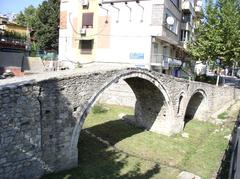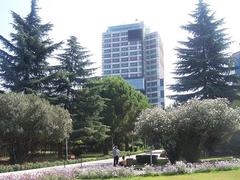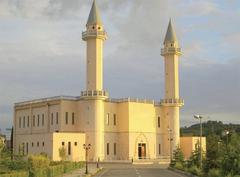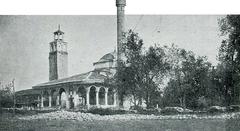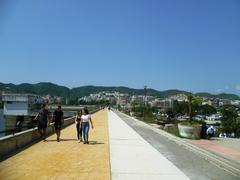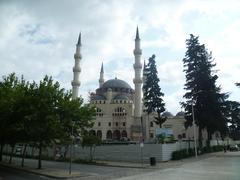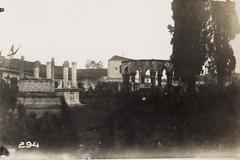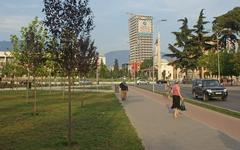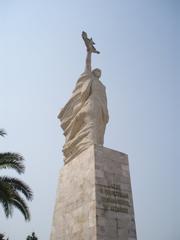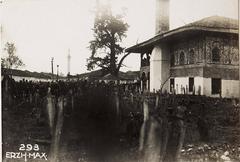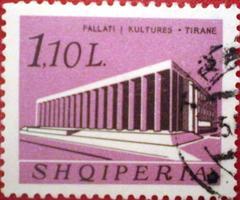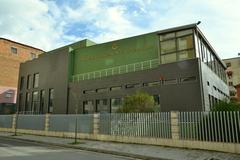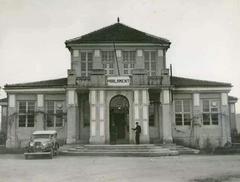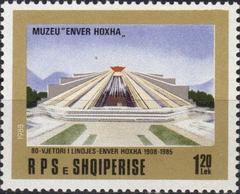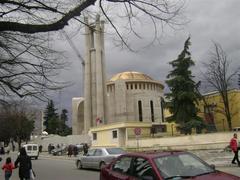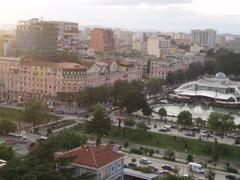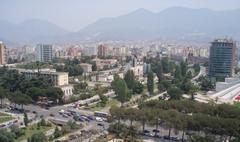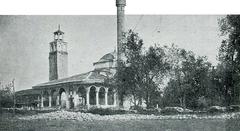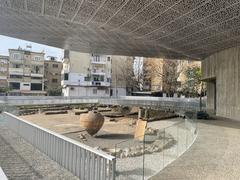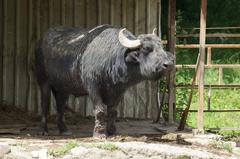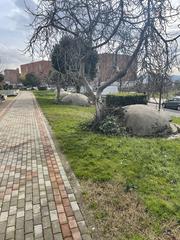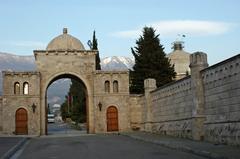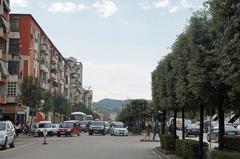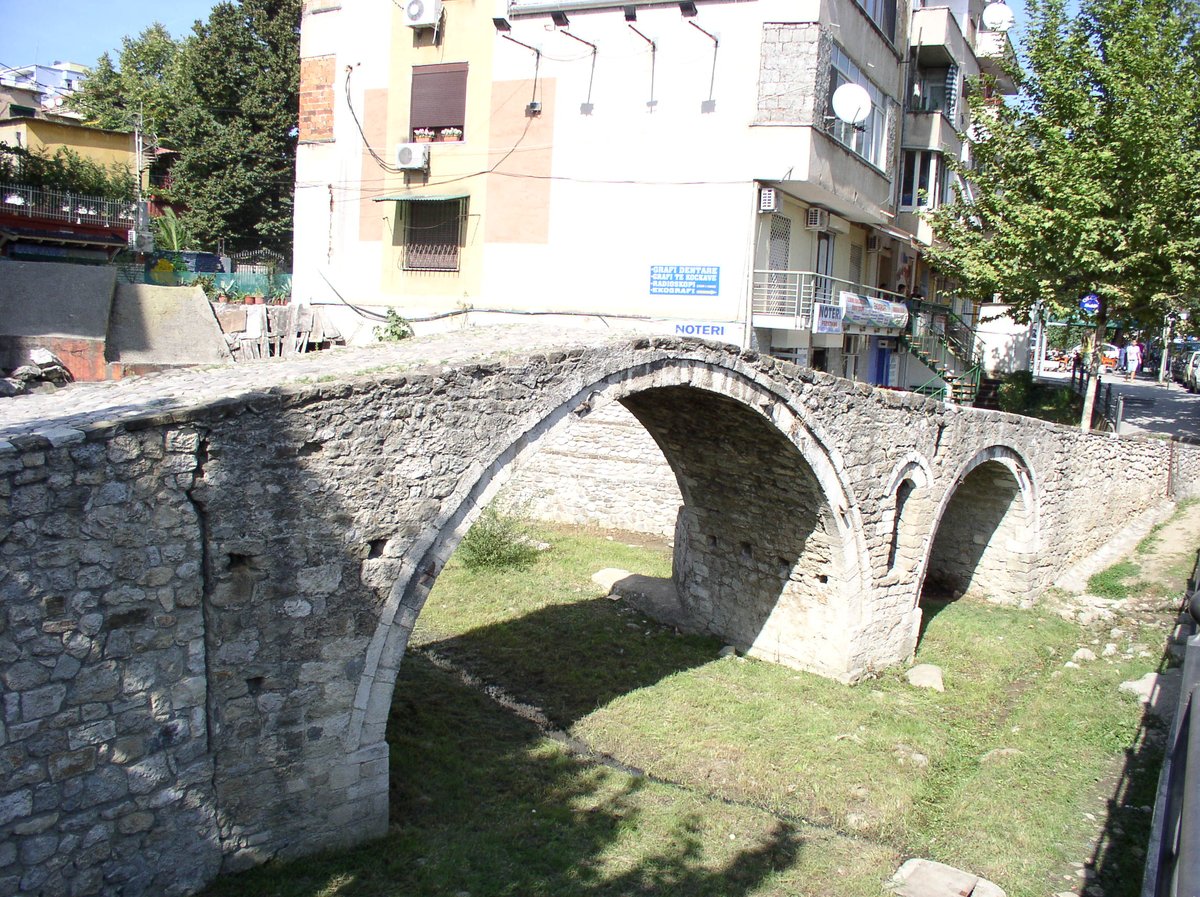
Tanners’ Bridge: Visiting Hours, Tickets, and Historical Sites in Tirana, Albania
Date: 14/06/2025
Introduction
Tanners’ Bridge (Ura e Tabakëve) is a treasured historical landmark located in the heart of Tirana, Albania. This elegantly preserved Ottoman-era bridge offers a fascinating window into the city’s artisanal past and urban development, making it a must-visit for history enthusiasts, cultural travelers, and anyone eager to explore Tirana’s rich heritage. This detailed guide provides comprehensive information on the bridge’s history, architectural features, visiting hours, ticketing, accessibility, nearby attractions, and practical travel tips for a memorable visit.
Origins and Historical Significance
Constructed in the late 17th or early 18th century, Tanners’ Bridge was built during a period of significant growth in Tirana, then a bustling market town within the Ottoman Empire. Named after the tanners’ guild (“tabakë”) whose workshops thrived nearby, the bridge played a crucial role in connecting Tirana’s central bazaar to the eastern highlands via the historic Shëngjergj road. This route facilitated the movement of agricultural products, livestock, and especially leather goods, as tanning was a major economic activity in the city (Albanopedia; Travelling King).
Tanners’ Bridge stands as an enduring symbol of Tirana’s Ottoman heritage and economic history, representing the city’s transformation from a small artisanal hub to a modern capital.
Architectural Features
The bridge exemplifies Ottoman civil engineering with its graceful single stone arch and modest yet sturdy design. Constructed from locally sourced stone, Tanners’ Bridge measures approximately 8 meters in length, 2.5 meters in width, and 3.5 meters in height. Its slightly pointed arch, low stone parapets, and original cobblestone walkway reflect the craftsmanship and functional beauty typical of the era (Evendo; Visit Tirana).
Restoration efforts in the 1990s and again in 2007 have ensured the bridge’s preservation, with artificial ponds recreated on each side to evoke its historical setting (Balkan Kaleidoscope).
Role in Tirana’s Urban Development
During the Ottoman period, the tanners’ guild was central to Tirana’s economy. The bridge enabled efficient transport of goods between the tanners’ district and the city’s main bazaar, reinforcing Tirana’s status as a regional trading center. Even after the Lana River was redirected in the 1930s—rendering the bridge obsolete for vehicles—Tanners’ Bridge was preserved as a pedestrian monument, integrating history into the modern urban landscape (Albanopedia).
Restoration and Preservation
Local authorities and heritage organizations have prioritized the conservation of Tanners’ Bridge. Restoration projects have included stabilizing the structure, cleaning and repairing stonework, and landscaping the surrounding area to create a welcoming pedestrian space. These efforts ensure that the bridge remains a vibrant part of Tirana’s cultural and architectural heritage (IRCICA Archdata; albaniaturism.com).
Visiting Tanners’ Bridge: Hours, Tickets, and Accessibility
- Visiting Hours: Open to the public 24 hours a day, year-round. There are no entrance gates or closing times, making it accessible at your convenience (Visit Tirana).
- Tickets: Free admission; no tickets required.
- Location: Centrally located near Skanderbeg Square, Blv. Zhan d’Ark, Tirana. Easily accessible on foot from the city center (Wind and Whim).
- Accessibility: The bridge’s historic cobblestone surface can be uneven and slippery when wet. Visitors with mobility challenges should take care. The surrounding landscaped areas offer smoother paths and benches for rest (Wander-Lush).
Nearby Attractions and Travel Tips
- Historical Sites: Combine your visit to Tanners’ Bridge with nearby attractions such as the Tanners’ Mosque (built by the tanners’ guild in the 18th century), the New Bazaar (Pazari i Ri), Skanderbeg Square, the National History Museum, and Tirana Castle (The Crazy Tourist; Krista the Explorer; GPSmyCity).
- Best Time to Visit: Early morning or late afternoon for softer lighting, fewer crowds, and optimal photography conditions. Shoulder seasons (spring and fall) offer pleasant weather (Wander-Lush).
- Amenities: No dedicated visitor facilities at the bridge, but cafes, restaurants, and restrooms are available at the nearby New Bazaar.
- Language: English is commonly spoken in tourist areas, but learning basic Albanian greetings is appreciated (The Balkans and Beyond).
- Transport: Walking is the best way to explore central Tirana. Taxis and public buses are available for longer distances. Tirana International Airport is a 20–25 minute taxi ride away.
Visitor Experience
Tanners’ Bridge is an inviting spot for photography, cultural walks, and relaxation. The surrounding landscaped paths and restored ponds create a peaceful ambiance. Occasional cultural events and community gatherings take place here, adding to the lively atmosphere.
Guided tours—both in-person and self-guided via apps like GPSmyCity—often include Tanners’ Bridge as a highlight, offering historical insights and context (tiranatriennale.com).
Cultural and Historical Context
Tanners’ Bridge is more than a relic; it is a living monument to Tirana’s Ottoman-era prosperity and artisanal roots. The bridge’s integration into the city’s pedestrian network and its proximity to other historical sites make it central to heritage tourism and cultural exploration (IRCICA Archdata; Tirana Municipality).
Ongoing municipal projects aim to further enhance the area, including plans for a new underground market celebrating local crafts and reviving the bazaar spirit (Balkan Kaleidoscope).
Quick Facts Table
| Feature | Description |
|---|---|
| Construction Period | Late 17th or early 18th century (Ottoman era) |
| Main Material | Locally sourced stone |
| Structural Design | Single stone arch |
| Dimensions | ~8m length, 2.5m width, 3.5m height (approximate) |
| Parapets | Low stone parapets for safety |
| Walkway | Slightly convex, original cobblestone paving |
| Accessibility | Pedestrian-only, uneven surface |
| Restoration | Major works in the 1990s and 2007, including landscaping and pond creation |
Frequently Asked Questions (FAQs)
Q: Are there entrance fees or tickets required to visit Tanners’ Bridge?
A: No, visiting the bridge is free and open to the public at all times.
Q: What are the best visiting hours?
A: The bridge can be visited at any time. Morning and late afternoon provide the best natural lighting and a quieter experience.
Q: Is Tanners’ Bridge accessible for visitors with mobility challenges?
A: The cobblestone surface is uneven, and there are no handrails, so extra caution is needed. The surrounding walkways are more accessible.
Q: Are guided tours available?
A: Yes, both guided and self-guided tours include Tanners’ Bridge. Options are available through local operators and mobile apps (GPSmyCity; Eventbrite).
Q: Can I find refreshments nearby?
A: Yes, the New Bazaar and surrounding cafes offer food, drinks, and restrooms.
Visitor Recommendations
- Combine your visit to Tanners’ Bridge with stops at the Tanners’ Mosque, the New Bazaar, and Skanderbeg Square for a comprehensive historical and cultural experience.
- Wear comfortable shoes suitable for cobblestone surfaces.
- Bring a camera for memorable photos, especially during golden hour.
- Consider joining a guided tour to deepen your understanding of the bridge’s historical significance.
- Visit during the shoulder seasons for pleasant weather and fewer tourists.
Ongoing Developments
Tirana’s municipality continues to invest in the bridge and its surroundings, transforming the area into a vibrant pedestrian zone with plans for further cultural and commercial enhancements. These initiatives aim to preserve Tanners’ Bridge as a living monument and a focal point for community engagement and heritage tourism (Balkan Kaleidoscope).
Visuals and Resources

For maps, self-guided tours, and virtual visits, explore Visit Tirana’s interactive map.
References
- Albanopedia
- albaniaturism.com
- Travelling King
- Visit Tirana
- Balkan Kaleidoscope
- tiranatriennale.com
- Wind and Whim
- The Balkans and Beyond
- Just Go Exploring
- The Crazy Tourist
- Krista the Explorer
- GPSmyCity
- IRCICA Archdata
- Tirana Municipality
- Wander-Lush
- Eventbrite
Conclusion and Call to Action
Tanners’ Bridge is a living testament to Tirana’s Ottoman heritage and artisanal legacy. With free access, a central location, and ongoing preservation, it offers an enriching experience for every visitor. Plan your visit during the shoulder seasons for optimal weather and fewer crowds. Combine your trip with nearby historical sites, and consider guided or self-guided tours to enhance your understanding of the bridge’s significance.
For more tips and immersive guides, download the Audiala app. Stay updated on Tirana’s cultural events by following our social media channels.
